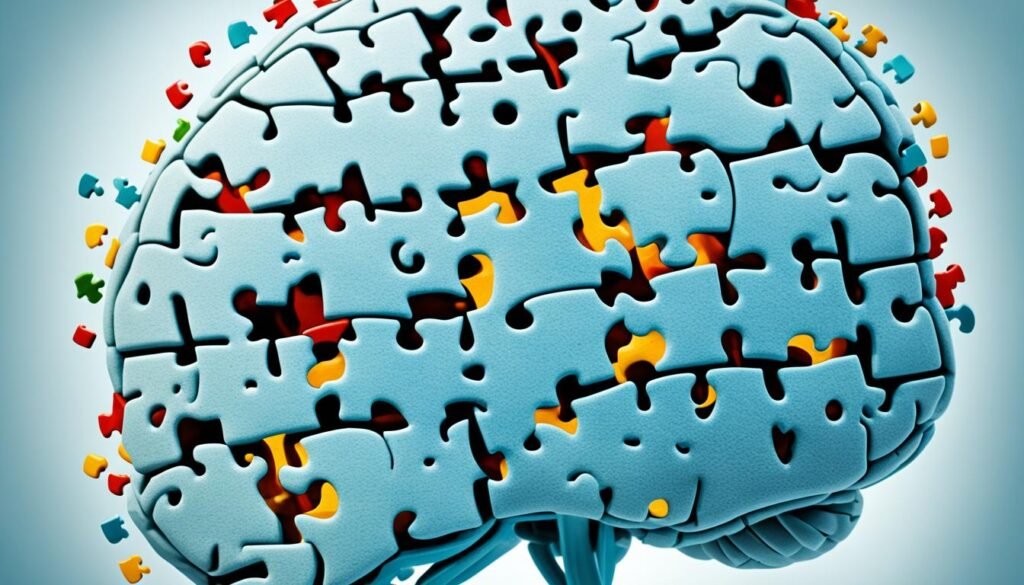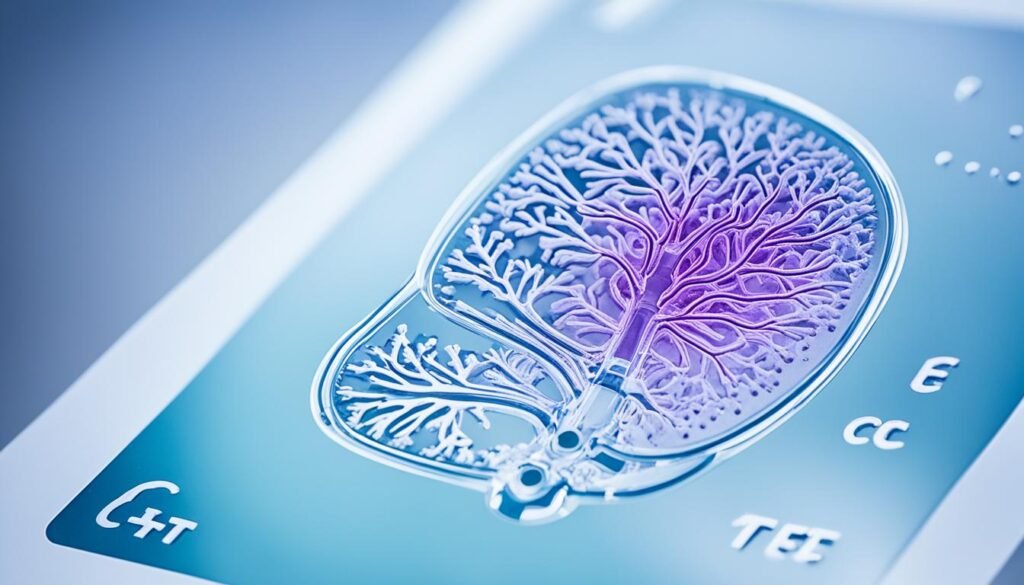Welcome to our informative guide on chronic traumatic encephalopathy (CTE) treatment options. If you or someone you know is impacted by repetitive head trauma and concussions, this article will provide valuable insights into managing this degenerative neurological disorder.
Currently, there is no definitive way to diagnose CTE during a person’s lifetime. However, there are clinical criteria for diagnosing traumatic encephalopathy syndrome (TES), which is associated with CTE. Diagnosis of CTE requires evidence of brain tissue degeneration and the presence of tau and other protein deposits in the brain, which can only be seen during an autopsy.
Research is ongoing to develop tests for diagnosing CTE while a person is alive, such as neuropsychological tests and specialized MRIs. Seeking medical care from experts, such as those at Mayo Clinic, can help address CTE-related health concerns and provide guidance on detection and management of traumatic brain injury.
While there is currently no specific treatment for CTE, the focus is on preventing head injuries and managing traumatic brain injury. In this article, we will explore the various treatment options available and discuss the importance of seeking professional care and staying informed about the latest advancements in CTE research.
Table of Contents
ToggleUnderstanding Chronic Traumatic Encephalopathy (CTE)
Chronic traumatic encephalopathy (CTE) is a degenerative neurological disorder that primarily affects individuals who have experienced repetitive head trauma, particularly in sports or military settings.
The symptoms of CTE can vary from person to person, but they generally resemble those of other neurodegenerative diseases like Alzheimer’s. CTE typically develops slowly over time after multiple head impacts or concussions and can lead to cognitive impairment and eventual dementia.
Common symptoms of CTE include:
- Cognitive problems: difficulties with memory, attention, and thinking processes
- Emotional changes: mood swings, depression, and irritability
- Confusion: difficulty understanding and organizing thoughts
- Difficulty with comprehension: trouble understanding and processing information
As the disease progresses, individuals may experience more severe cognitive issues, motor symptoms like tremors and rigidity, and even swallowing difficulties.
The exact causes of CTE are still being studied, but repetitive hits to the brain and repeated bouts of trauma are known to increase the risk. Athletes involved in contact sports like boxing, football, and soccer, as well as military personnel exposed to blast injuries, are particularly vulnerable to developing CTE.

Image: Chronic Traumatic Encephalopathy (CTE) – Understanding the Impact
Seeking Professional Care for CTE
Currently, there is no definitive diagnostic test for chronic traumatic encephalopathy (CTE). Diagnosing CTE is typically based on a person’s history of participating in high-risk activities and the presence of symptoms and examination findings consistent with CTE. If you or someone you know is experiencing symptoms related to memory and cognition, seeking medical care is crucial for proper evaluation and management.
To start, reach out to your primary care provider who can guide you through the next steps. They may refer you to specialists such as neurologists, psychiatrists, or neuropsychologists who have expertise in diagnosing and treating CTE. These specialists will conduct a thorough evaluation and may use various tests and assessments to gather information about your symptoms and overall condition.
To make the most of your appointment, it’s helpful to come prepared. Write down your symptoms, including any specific details such as when they started and how they have progressed. Provide a detailed medical history, noting any head injuries or concussions you’ve experienced. It’s also important to bring a list of medications and supplements you are currently taking.
In some cases, additional testing may be recommended to rule out other conditions or gain further insights into the brain. Neuroimaging scans, such as MRI or CT scans, can provide detailed images of the brain and help detect any abnormalities. These tests may be helpful in confirming a diagnosis of CTE or ruling out other potential causes of your symptoms.
Remember, seeking professional care from experts who specialize in CTE is crucial for accurate diagnosis and appropriate management. They can provide personalized guidance based on your unique situation and help you navigate the complexities of living with CTE.

| Benefits of Seeking Professional Care for CTE | Drawbacks of Delaying Care |
|---|---|
|
|
Current Treatment Options for CTE
At present, there is no specific treatment or cure for chronic traumatic encephalopathy (CTE). The condition is progressive, meaning it worsens over time. The focus of current management strategies is on preventing further head injuries and minimizing the impact of traumatic brain injury.
Preventive measures include:
- Practicing safe sports techniques
- Using appropriate protective gear
- Raising awareness about the risks of repetitive head trauma
While there are no approved medications or therapies specifically designed for CTE, complementary treatments like cognitive rehabilitation and behavioral therapies may help manage some of the symptoms associated with the disease. Working closely with a healthcare team that specializes in CTE and traumatic brain injury is crucial to developing an individualized treatment plan.
Staying informed about the latest research and developments in CTE treatment is essential.
Treatment Measures for CTE
Although there is currently no cure for CTE, individuals can take certain steps to manage the condition and improve their quality of life:
- Engage in cognitive rehabilitation programs to enhance memory, attention, and executive functioning skills.
- Participate in behavioral therapies, such as counseling or psychotherapy, to address emotional changes associated with CTE.
- Follow a healthy lifestyle, including regular exercise, a balanced diet, and sufficient sleep, to support overall brain health.
- Seek support from support groups or mental health professionals to cope with the challenges posed by CTE.
It is crucial to consult with a healthcare professional experienced in managing CTE to develop a personalized treatment plan that addresses individual needs and goals.
| Treatment Strategies | Benefits |
|---|---|
| Cognitive Rehabilitation Programs | – Improve memory, attention, and executive functioning skills – Enhance overall cognitive abilities |
| Behavioral Therapies | – Address emotional changes and challenges – Provide coping strategies |
| Healthy Lifestyle | – Support brain health and function – Improve overall well-being |
| Support Groups/Mental Health Professionals | – Provide emotional support and understanding – Offer guidance on managing the impact of CTE |
While current treatment options for CTE focus on symptom management and improving quality of life, ongoing research aims to uncover new therapies and interventions that can target the underlying mechanisms of the disease. Staying informed and actively engaging in conversations with healthcare professionals can help individuals make informed decisions and access the most up-to-date treatment options available.

The Future of CTE Diagnosis and Treatment
As research in the field of chronic traumatic encephalopathy (CTE) continues to progress, there is hope for advancing the diagnosis and treatment of this degenerative neurological disorder. Scientists and clinicians are focusing on developing new diagnostic tools and treatment options to improve our understanding of the disease and provide better care for individuals affected by CTE.
One area of research involves the exploration of potential biomarkers to aid in the early detection of CTE during a person’s lifetime. These biomarkers may include neuropsychological tests and specialized imaging techniques that can reveal early signs of brain tissue degeneration and the presence of tau and other protein deposits, which are characteristic of CTE. By identifying CTE at earlier stages, interventions and treatment strategies can be implemented to potentially slow down the progression of the disease and mitigate its impact.

Ongoing clinical trials are also exploring experimental treatments for CTE. These trials aim to uncover new insights into the disease and evaluate the efficacy of different therapeutic approaches. By participating in these trials, eligible individuals can contribute to the advancement of CTE research and potentially benefit from emerging treatment options.
Staying informed about the latest advancements in CTE research is crucial for individuals and their families. By keeping up to date with scientific discoveries and breakthroughs, you can better understand the disease and make informed decisions about your health and well-being. Consultation with healthcare professionals who specialize in CTE and traumatic brain injuries can provide guidance on the latest diagnostic techniques and treatment strategies.
The future holds promise for improved diagnostics and treatments for CTE. Ongoing research efforts and clinical trials are paving the way for advancements in our understanding of the disease and offering hope to individuals affected by CTE and their loved ones.
Conclusion
Chronic traumatic encephalopathy (CTE) is a degenerative neurological disorder associated with repetitive head trauma and concussions. Although there is currently no definitive way to diagnose CTE during a person’s lifetime, clinical criteria exist for diagnosing traumatic encephalopathy syndrome (TES), which is associated with CTE. The focus of current management strategies for CTE is on preventing head injuries and effectively managing traumatic brain injury.
While specific treatment options for CTE are still unavailable, complementary therapies like cognitive rehabilitation and behavioral interventions can help manage symptoms. Ongoing research is dedicated to developing new diagnostic tools and treatment options for CTE, with a particular emphasis on biomarkers and clinical trials. Staying informed about the latest advancements is crucial for individuals managing CTE and working closely with healthcare professionals to make informed decisions regarding their health and well-being.
By being proactive in preventing head injuries and seeking appropriate medical care, individuals can take control of their CTE-related health concerns. While challenges remain, the scientific community’s dedication to understanding and managing CTE provides hope for improved diagnostics and treatments in the future. Stay informed, stay proactive, and work closely with healthcare professionals for the best possible outcomes in your CTE journey.
FAQ
What is chronic traumatic encephalopathy (CTE)?
Chronic traumatic encephalopathy (CTE) is a degenerative neurological disorder caused by repetitive head trauma and concussions. It primarily affects individuals who have experienced repetitive head trauma, particularly in sports or military settings.
What are the symptoms of CTE?
The symptoms of CTE can vary from person to person, but they generally resemble those of other neurodegenerative diseases like Alzheimer’s. Common symptoms include cognitive problems, emotional changes, confusion, and difficulty with comprehension. As the disease progresses, individuals may experience more severe cognitive issues, motor symptoms like tremors and rigidity, and even swallowing difficulties.
How is CTE diagnosed?
Currently, there is no definitive diagnostic test for CTE. A diagnosis is typically made based on a person’s history of participating in high-risk activities, the presence of symptoms, and examination findings consistent with CTE. Medical professionals, such as neurologists and neuropsychologists, may be involved in the diagnostic process.
Is there a specific treatment for CTE?
At present, there is no specific treatment or cure for CTE. The focus of current management strategies is on preventing further head injuries and minimizing the impact of traumatic brain injury. Complementary treatments like cognitive rehabilitation and behavioral therapies may help manage some of the symptoms associated with the disease.
What is the future of CTE diagnosis and treatment?
Ongoing research is focused on advancing our understanding of CTE and developing new diagnostic tools and treatment options. Scientists and clinicians are exploring potential biomarkers and specialized imaging techniques to aid in the early detection of CTE during a person’s lifetime. Clinical trials investigating experimental treatments for CTE are also underway.
Source Links

Best Neurologist Doctor In Patna: Dr Chandril Chugh Dedicated to Your Well-being
Dr.Chandril Chugh is a neurologist who trained and practiced in the USA for more than a decade. He is compassionate and caring and is most well known for being a patient listener and spending ample time with patients.
